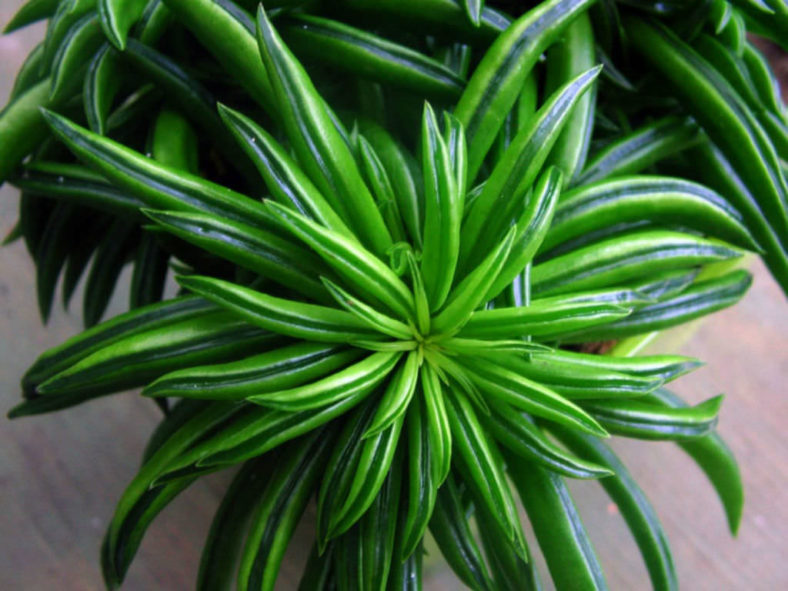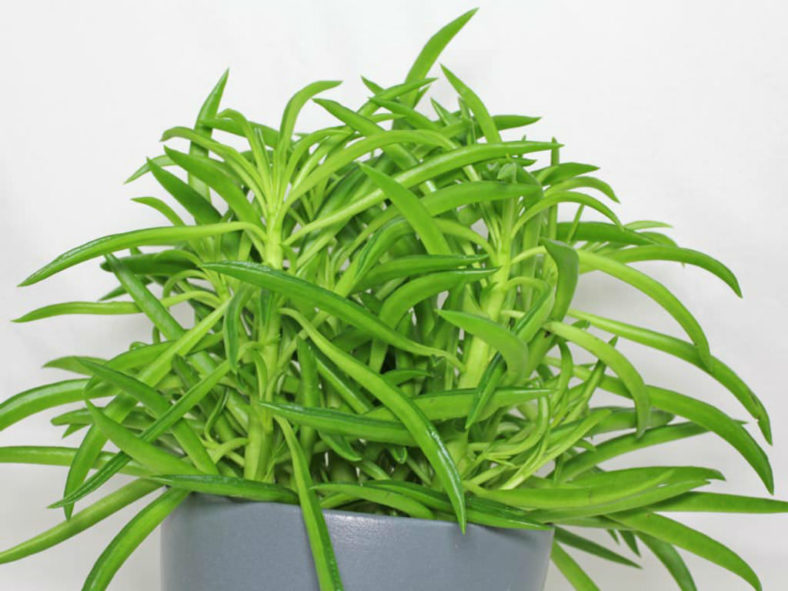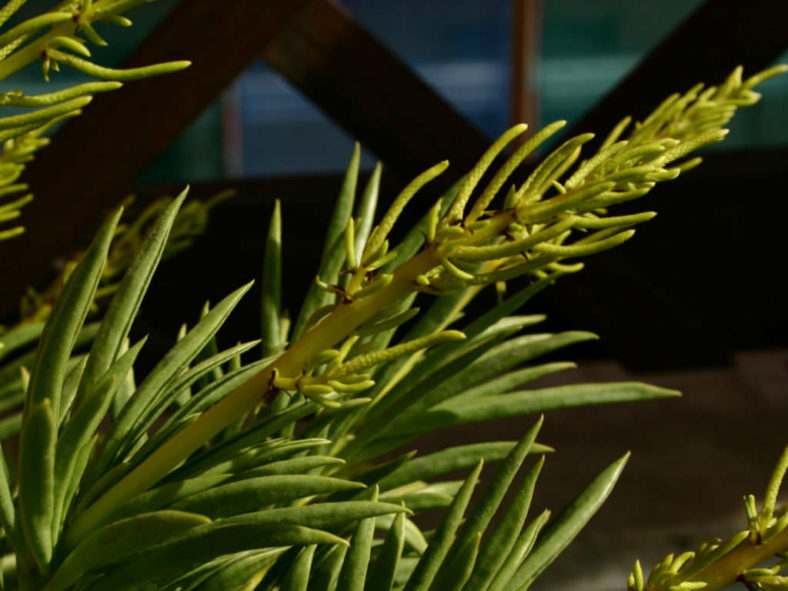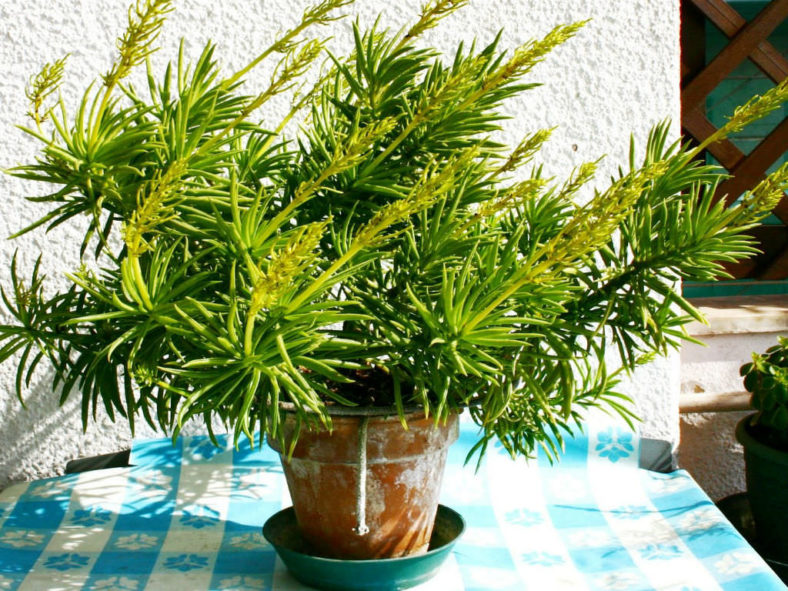Scientific Name
Peperomia ferreyrae Yunck.
Common Name(s)
Happy Bean, Pincushion Peperomia
Synonym(s)
Peperomia ferreyrae var. ferreyrae
Scientific Classification
Family: Piperaceae
Genus: Peperomia
Origin
Peperomia ferreyrae is native to Peru. It occurs in tropical forests at elevations that range between 4,920 and 6,630 feet (1,500 and 2,020 m).
Description
Peperomia ferreyrae is a small succulent shrub with erect branches that bear bright green, bean-like leaves with a darker green, translucent window along the upper surface. It can grow up to 12 inches (30 cm) tall. The branches are green with brownish leaf scars and with leaves present mainly in the upper half. The leaves are slender, curved, U-shaped in cross-section, measuring up to 3 inches (7.5 cm) long.
The tiny flowers appear all year round, densely clustered along terminal spikes that can grow up to 14 inches (35 cm) long.

Hardiness
USDA hardiness zones 10a to 11b: from 30 °F (−1.1 °C) to 50 °F (+10 °C).
How to Grow and Care
Peperomias are not particularly hard plants to grow, and their small size and delicate leaves make them perfect for desktops and dish gardens. They will rarely overtake their neighbors or shade them out. In short, they are perfectly mannered and attractive little plants. The biggest problems are usually related to watering. They like steadily moist soil but can be very sensitive to overwatering. Overwatered Peperomias tend to wilt or have raised, scab-like protrusions on their leaves. Do not be alarmed if your plant loses a few bottom leaves, but a massive leaf drop is usually due to a temperature change or fertilizer problem. Lastly, Peperomias are susceptible to mealybugs, so keep an eye out for cottony white masses on the stems or undersides of leaves. These plants thrive when slightly pot-bound, so do not overpot them.
Repot plants in spring, especially to refresh the existing soil, but place them either back into the same-size container after root-pruning or up to only one pot size. The largest Peperomias remain relatively small, so they will never grow into large specimen plants. Most species can be relatively easily propagated from leaf cuttings.
Learn more at How to Grow and Care for Peperomia.
Links
- Back to genus Peperomia
- Succupedia: Browse succulents by Scientific Name, Common Name, Genus, Family, USDA Hardiness Zone, Origin, or cacti by Genus
Photo Gallery
Click on a photo to see a larger version.


